Clitheroe, Lancashire
Up to 1834
A parliamentary report of 1777 recorded that Bolton by Bowland had a workhouse for up to 10 inmates. In about 1790, new premises were occupied at Holden, which were altered in 1830.
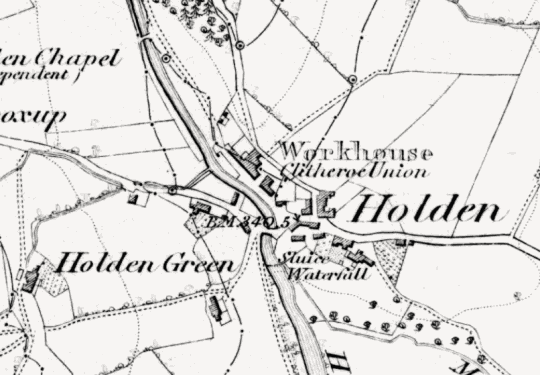
Holden (Bolton by Bowland) workhouse site, 1850.
In about 1817, a workhouse was also erected by the township of Aighton, Bailey and Chaigley, in the parish of Mitton. Its location is sometimes referred to as Over Hacking.
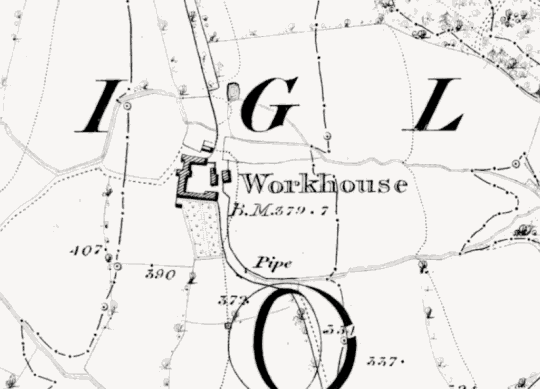
Aighton workhouse site, 1850.
The parish of Chipping established a workhouse on Malt Kiln Brow, Chipping.
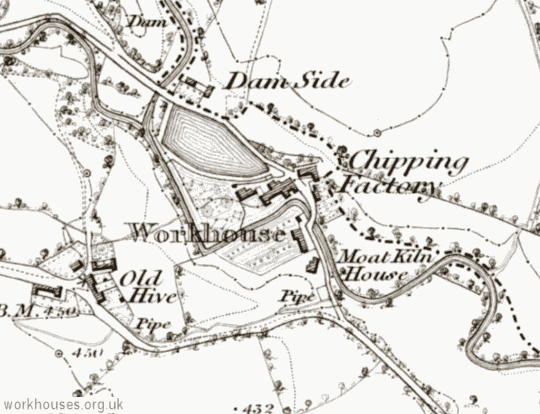
Chipping workhouse site, 1850.
After 1834
The Clitheroe Poor Law Union was formed on 14th January 1837. Its operation was overseen by an elected Board of Guardians, 35 in number, representing its 33 constituent parishes as listed below (figures in brackets indicate numbers of Guardians if more than one):
County of Lancaster:
Aighton, Bailey and Chaigley; Chatburn, Chipping, Clitheroe (3), Downham, Little Bowland with Leagram, Mearley, Pendleton, Thornley with Wheatley, Twiston, Whalley, Wiswell, Worston.
West Riding of Yorkshire:
Bashall Eaves, Bolton by Bowland, High Bowland Forest, Low Bowland Forest, Easington, Gisburn, Gisburn Forest, [Great] Mitton, Grindleton, Horton, Midhope [Middop], Newsholme, Newton, Paythorne, Rimington, Sawley, Slaidburn, Waddington, West Bradford.
The population falling within the Union at the 1831 census had been 23,168 with parishes ranging in size from Midhope (population 62) to Clitheroe itself (5,213).
For many years, Clitheroe Union resisted the building of a new workhouse and made use of the existing Chipping, Aighton and Holden workhouses.
The Chipping workhouse appears to have closed in about 1850. The building still exist, now converted to a row of five cottages.
The Aighton workhouse was used to house children and able-bodied adults. A Poor Law Inspector's report in 1866 noted that:
Because of its remote location, the Aighton workhouse was only inspected by the Guardians' Visiting Committee once a year rather than the usual once a week.
The Bolton by Bowland workhouse at Holden was used for the elderly and infirm, the insane and 'idiotic'. The 1866 inspection found the premises equally unimpressive:
There is no wine, beer, &c. in store; but should any be required, it is obtained from a neighbouring public-house...
The inmates appear to be clean, well fed, and generally contented with their condition.
Conditions were little better for the Board of Guardians. Their board room in Clitheroe, which was located above some stables and cow-sheds, was described by the inspector as the most incommodious and uncomfortable he had ever visited. The waiting-room for relief applicants was a cellar accessed by some "ruinous" stone steps which became awash with water in wet weather.
The Board of Guardians apparently took heed of these criticisms and the Poor Law Board's annual report for 1870 records that "two small and ill-constructed buildings hired by the [Clitheroe] Board of Guardians were closed on 25th March 1870. The Board of Guardians has consented to build a new workhouse for 150."
The new workhouse, for 200 inmates, together with a 36-bed hospital, was erected in 1870-73 at the south side of Chatburn Road in Clitheroe. The building was designed by Jonas J Bradshaw and was officially opened on 21st April, 1873. The site location and layout can be seen on the 1912 map below.
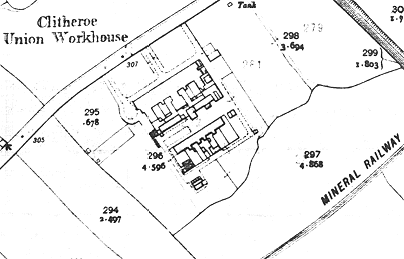
Clitheroe Workhouse site, 1912.
The main block was 225 feet long and faced to the north-west. It was two storeys high and had three projecting wings at the rear.
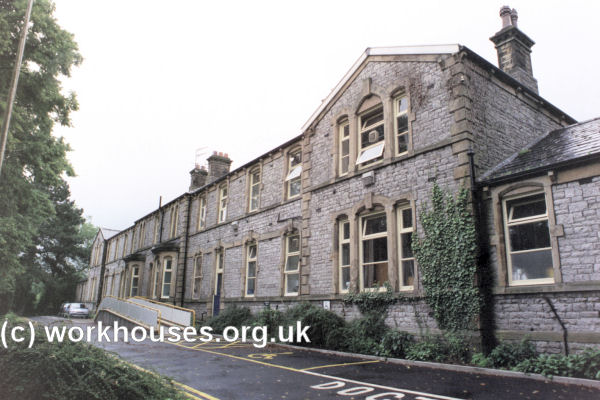
Clitheroe main block from the west, 2001.
© Peter Higginbotham.
Various single-storey workshop and utility blocks lay to the rear of the main building.
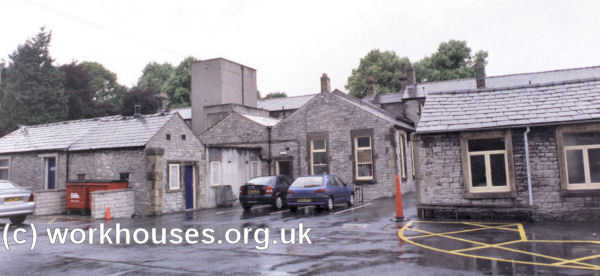
Clitheroe from the south-east, 2001.
© Peter Higginbotham.
The hospital block was located at the south of the main building.
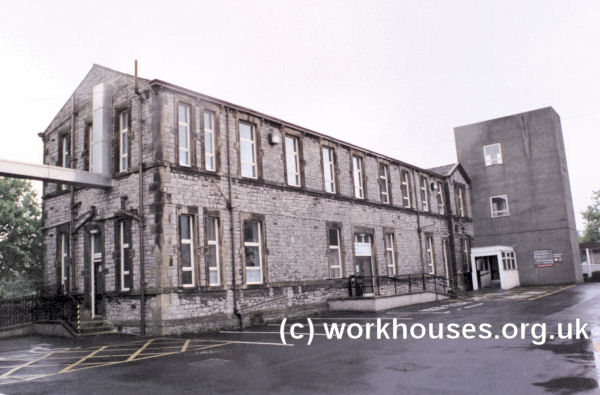
Clitheroe hospital block from the north-east, 2001.
© Peter Higginbotham.
After 1930, the workhouse site became Coplow View Public Assistance Infirmary. After 1948, it became part of the National Health Service, most recently as Clitheroe Community Hospital. In 2014, the hosptal moved to new premises on an adjacent site and the workhouse buildings were demolished in 2018.
Staff
Inmates
Records
Note: many repositories impose a closure period of up to 100 years for records identifying individuals. Before travelling a long distance, always check that the records you want to consult will be available.
- Lancashire Record Office, Bow Lane, Preston, Lancashire, PR1 2RE. Holdings include: Guardians' minutes (1837-1902, 1905-30); Births (1867-1913); Deaths (1866-1914); Creed register (1914-34); Register of mechanical restraint (1901-48); etc.
Bibliography
- Keepers of the House by Frank Lofthouse (Hudson History, 2001)
Links
- None.
Unless otherwise indicated, this page () is copyright Peter Higginbotham. Contents may not be reproduced without permission.


